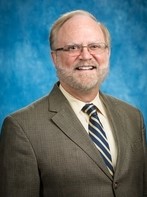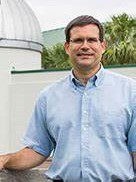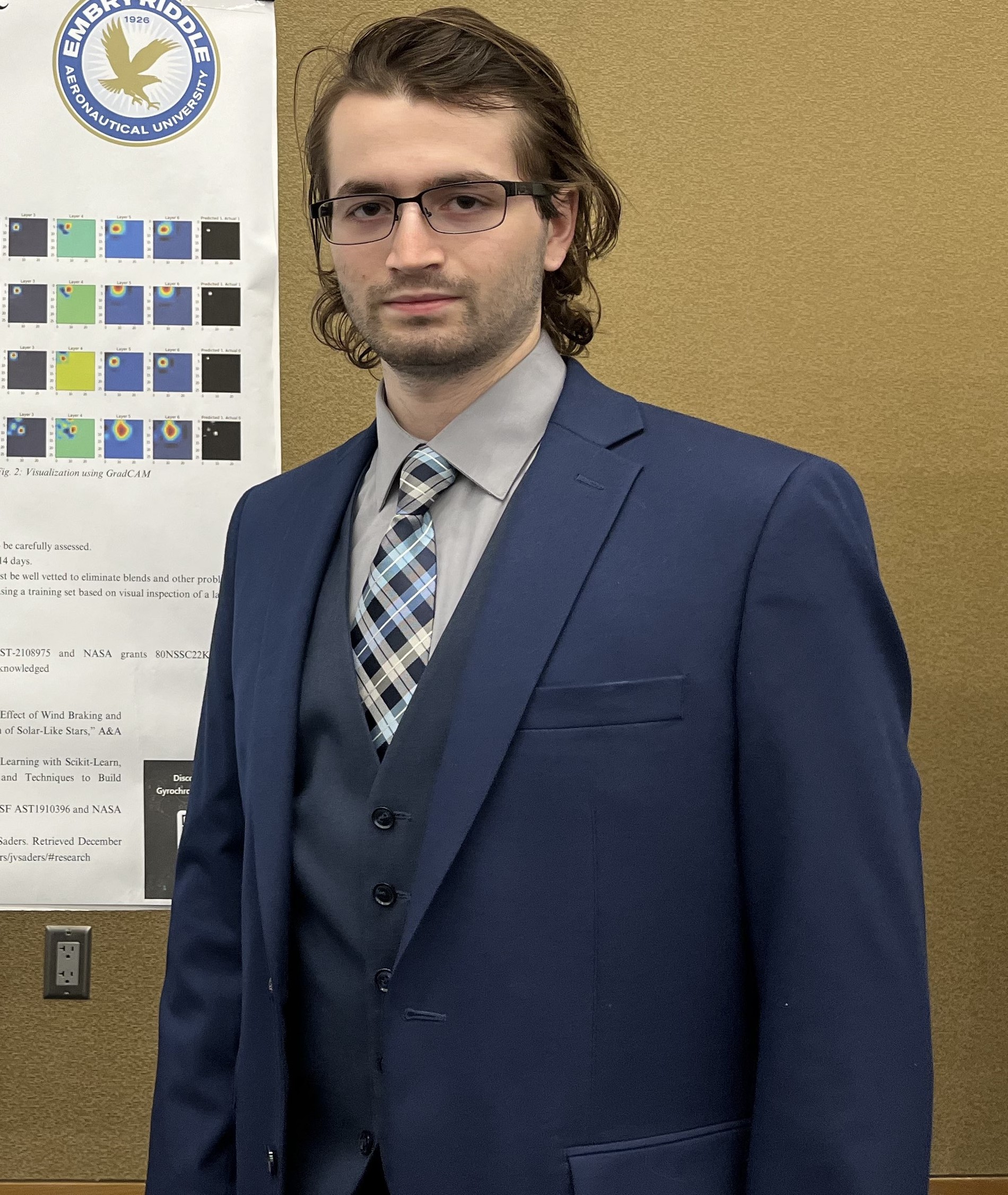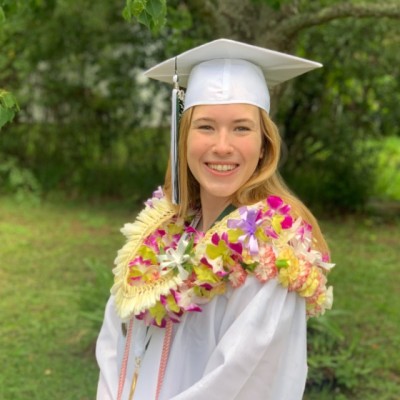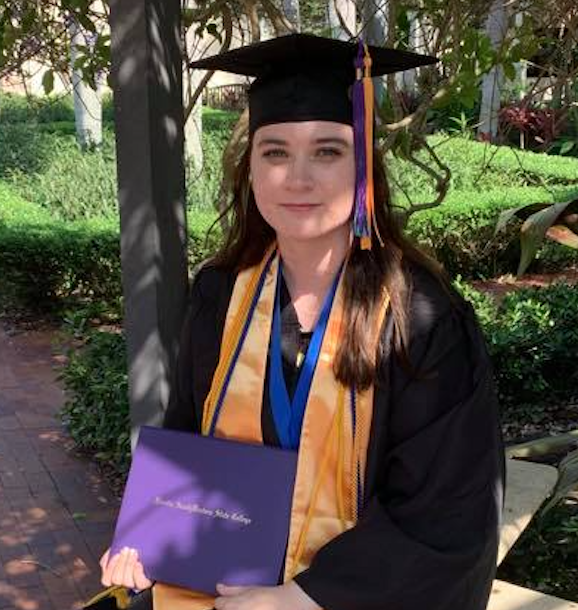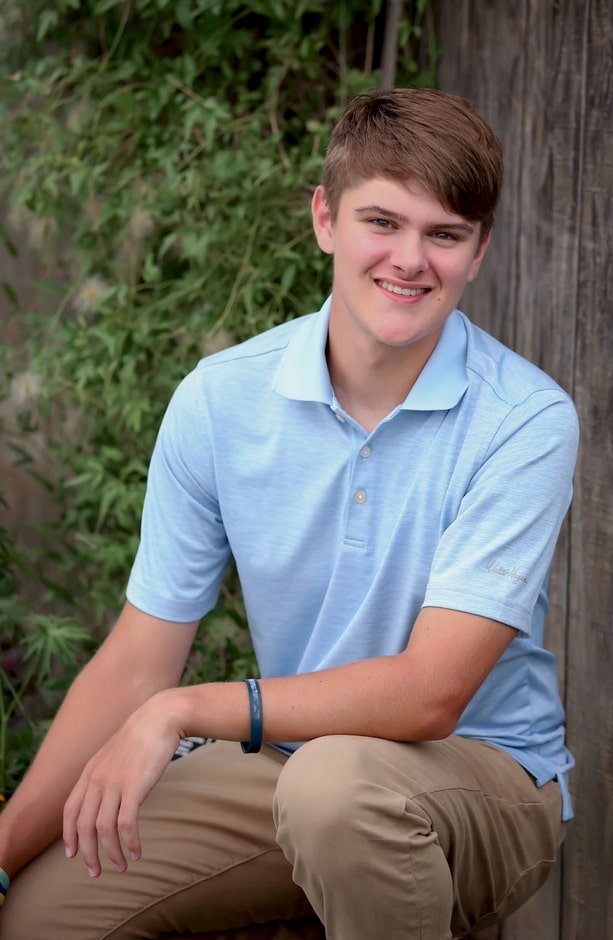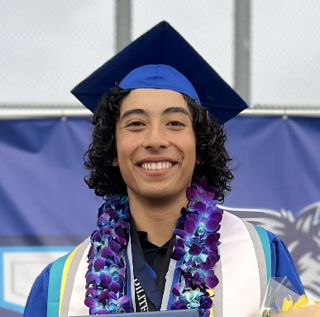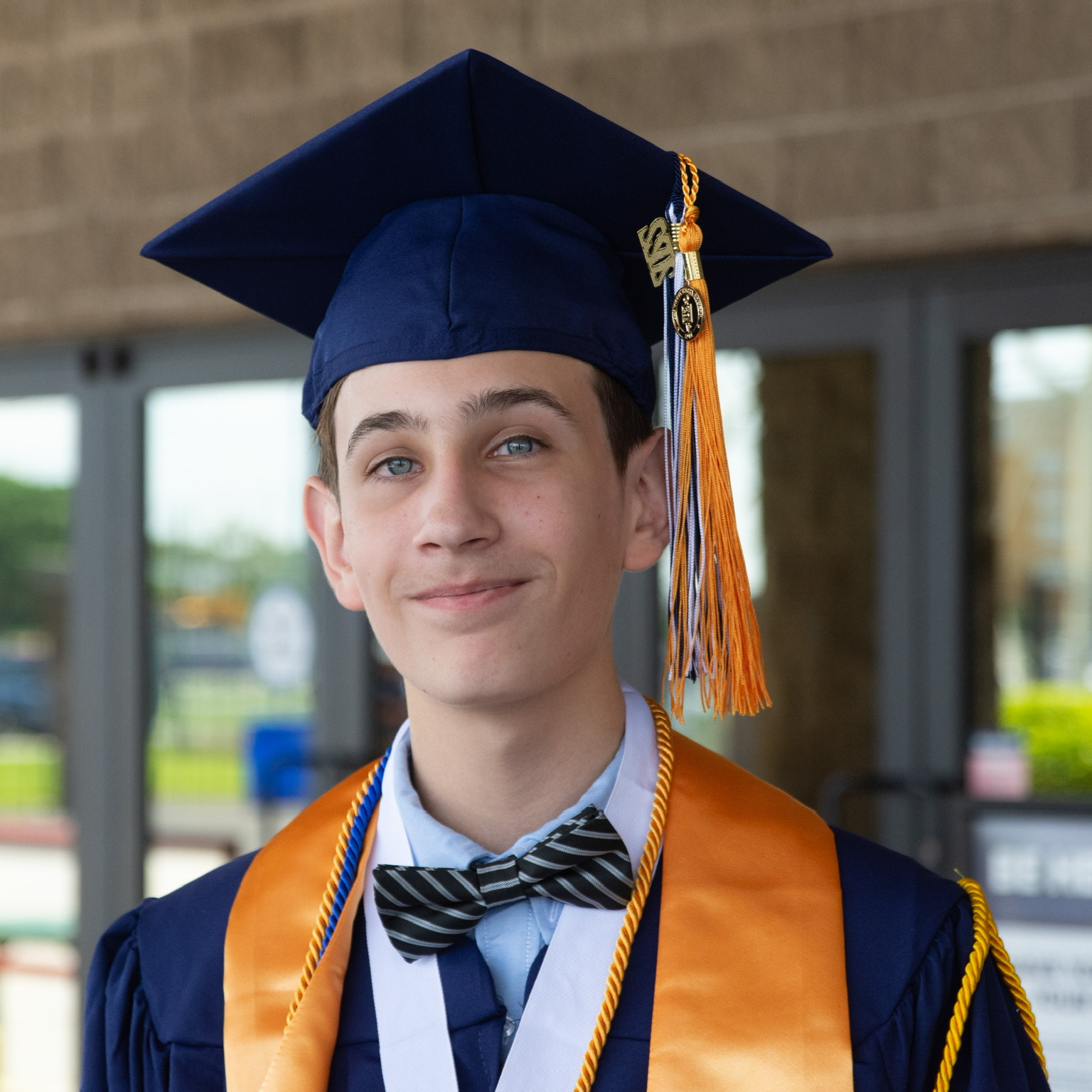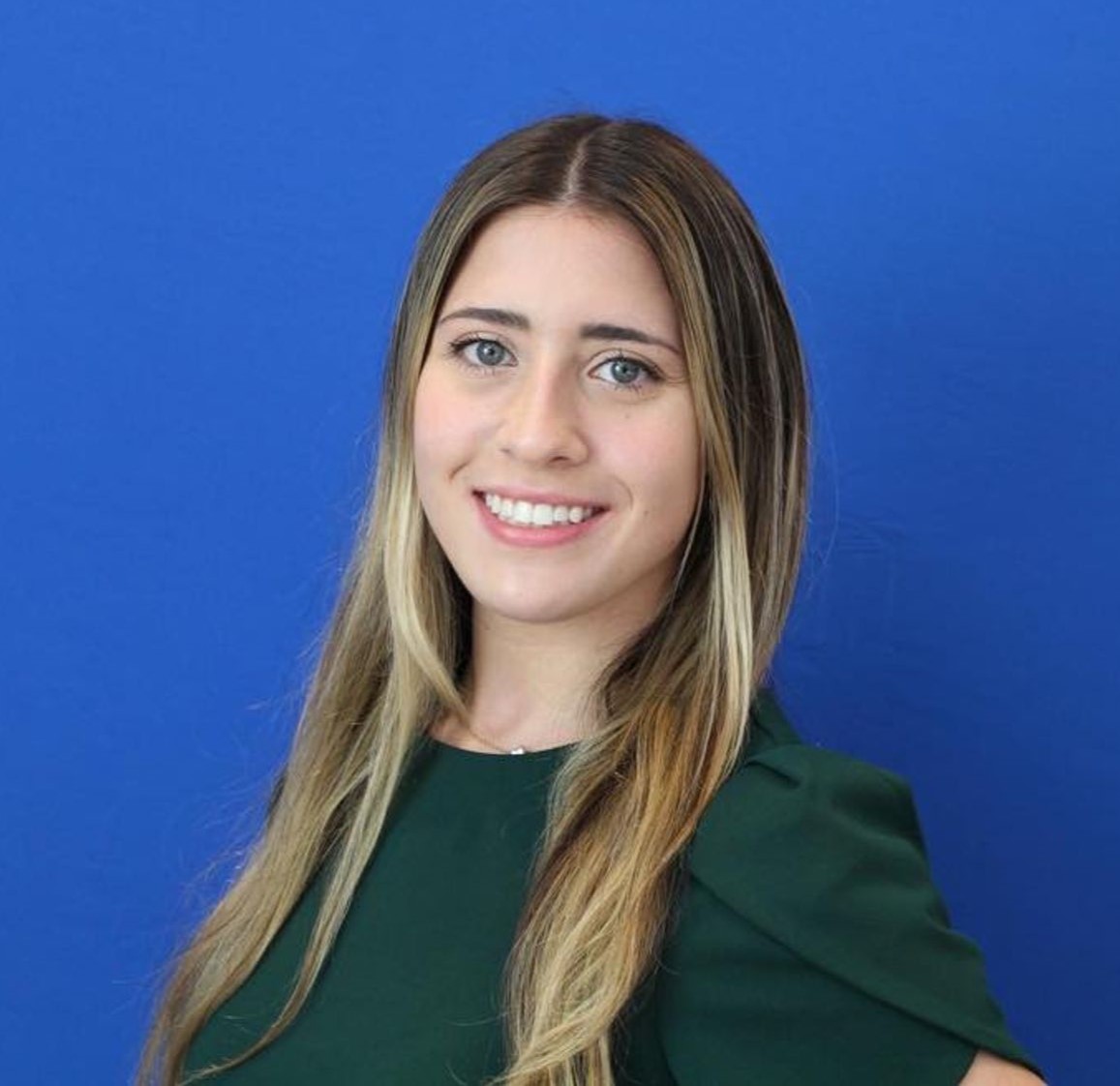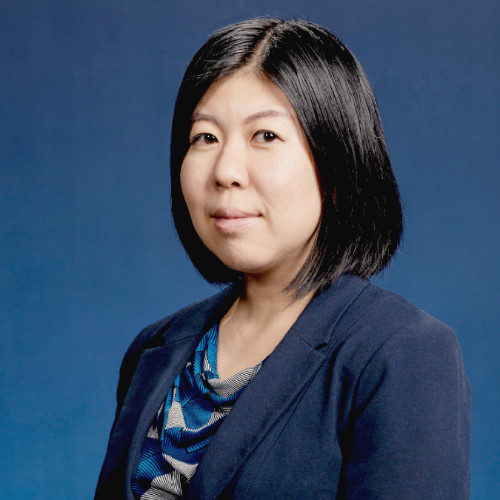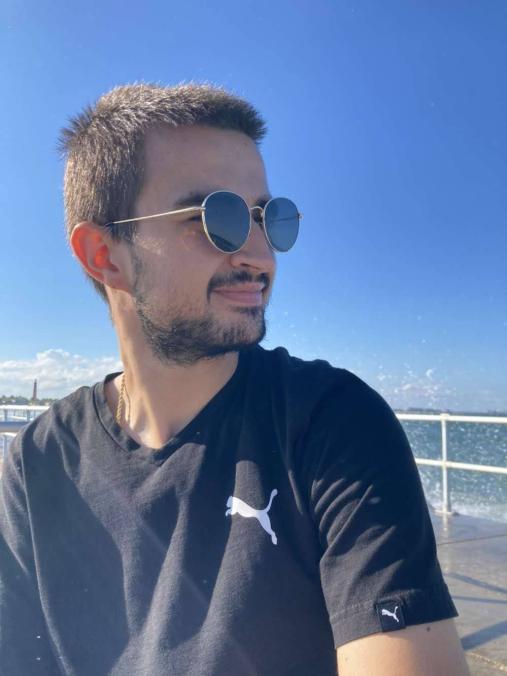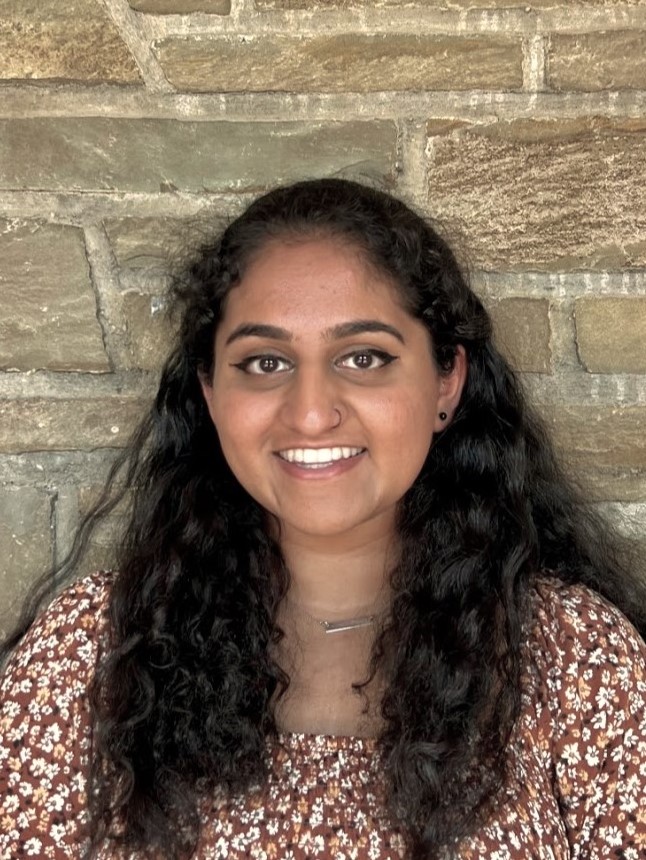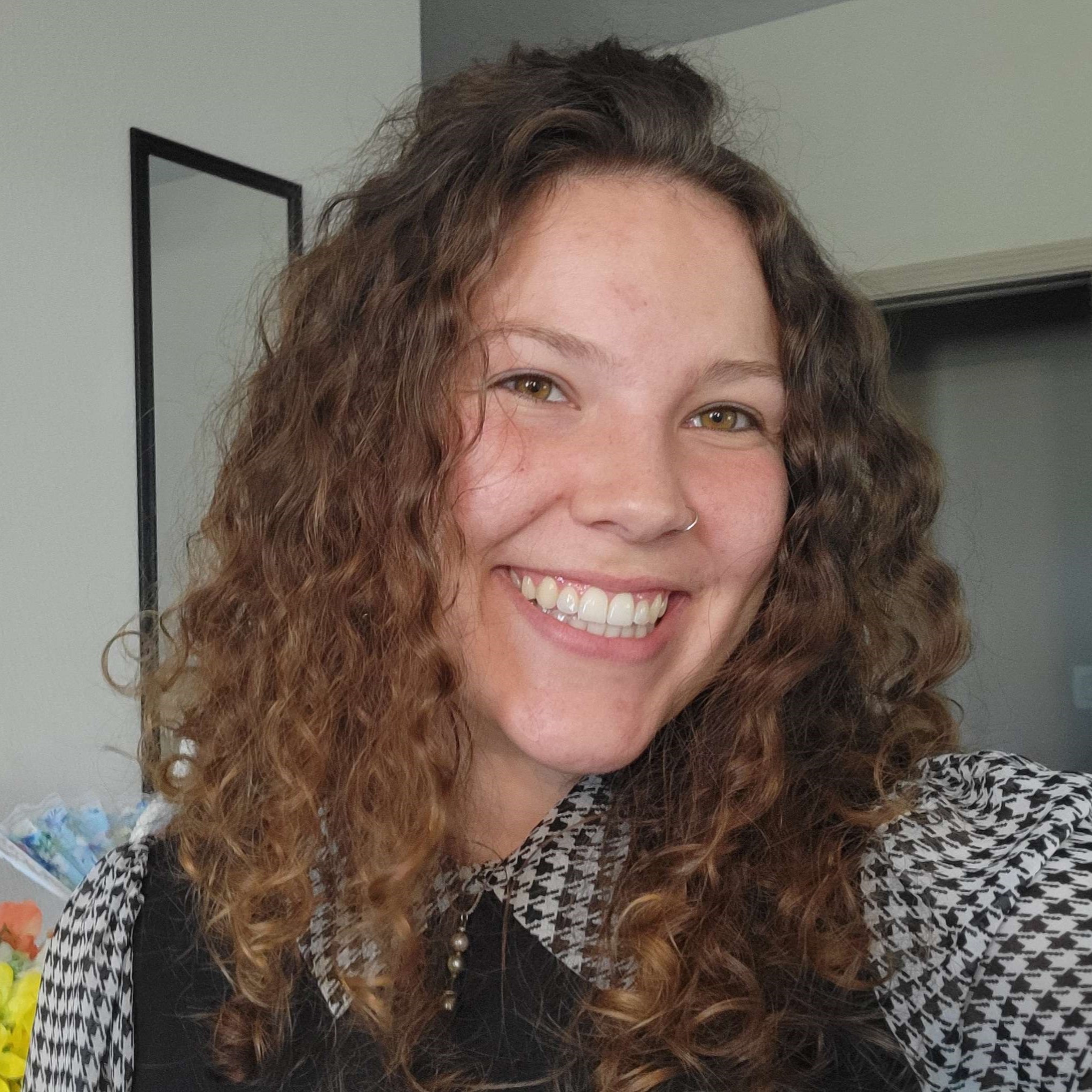Researchers
Current Researchers
Mariel Lares Martiz, Ph.D.
About
Dr. Lares Martiz's scientific interest is to answer the question: What are the stars like on the inside? To answer this question, she has studied stellar oscillations and gained expertise in asteroseismology, specifically analyzing non-linear pulsations. One of her main goals is to set the empirical basis of non-linear asteroseismology so the long-awaited data-driven non-linear models can be built.
Research
Her research has focused on studying non-linear pulsations, specifically in Delta Scuti stars. She has created a unique method to adequately describe the non-sinusoidal characteristics of the light curves (Lares-Martiz et al., 2020). Using this method, she was able to characterize the non-linear behavior in High Amplitude Delta Scuti stars.
Dr. Lares Martiz explored the idea of this behavior being generic so it can be used to identify the physical nature of a non-linearity (resonant mode coupling or non-linear response of the stellar medium) and as an extra constraint that would make modal identification possible in Delta Scuti stars (Lares-Martiz, 2022).
She also found that those specific non-sinusoidal features correlate to stellar parameters such as Log g, effective temperature, and stellar rotation (Lares-Martiz et al., in prep).
Additionally, I have contributed to the development of innovative ways of data processing and time series analyses to perform successful asteroseismic studies, for example, exploiting the fractal behavior in some stellar light curves (e.g., Pascual-Granado et al., 2018, de Franciscis et al., 2019).
Post Doctoral Researcher
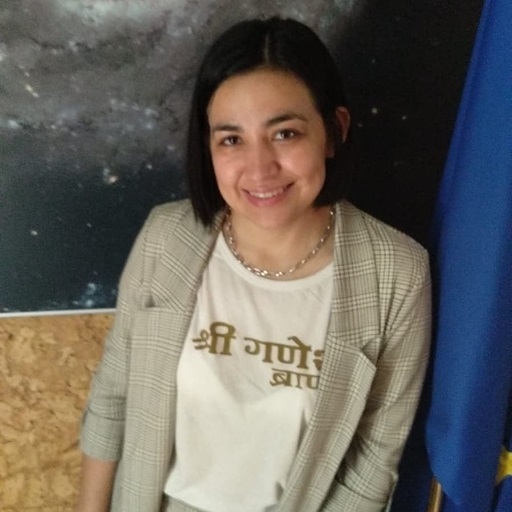
Contact
[email protected] LinkedIn Pulsing Stars Non-Linearities Extraction Method Asteroseismic inferences from the study of non-linearities in δ Sct stars
Terry Oswalt, Ph.D.
Education
- B.S. Astronomy, Indiana University Bloomington
- Ph.D. Astronomy & Astrophysics, The Ohio State University
About
Dr. Oswalt is an Associate Dean and Professor of Physics for the College of Arts and Sciences at Embry-Riddle Aeronautical University. Dr. Oswalt graduated from Indiana University Bloomington with his B.S. in Astronomy, then later graduated from The Ohio State University with his Ph.D. in Astronomy & Astrophysics.
Research
Dr. Terry Oswalt is an expert on white dwarf stars and wide binary star systems.
References
- Interviews with Technical People; Ep 30: Dr. Terry Oswalt: Astronomy (source)
Derek Buzasi, Ph.D.
Education
- B.A. Physics, Penn State University
- Ph.D. Astronomy, University of Chicago
About
Dr. Derek Buzasi is a Whitaker Eminent Scholar in Science at Florida Gulf Coast University. Dr. Buzasi graduated from the University of Chicago with a B.A. in Physics, then later graduated from Penn State University with a Ph.D. in Astronomy.
Research
Dr. Derek Buzasi is an expert on the Kepler reduction and analysis system and is supporting our extraction of light curves from the K2 data. Light curve extraction will be performed using a pipeline developed by him and his undergraduate students which has been tested on Kepler, K2, and Spitzer data. Buzasi is separately funded by NASA.
Krystian Confeiteiro
Education
- B.S. Astronomy & Astrophysics, minor in Computational Mathematics, Embry-Riddle Aeronautical University
About
Krystian Confeiteiro is an undergraduate student at Embry-Riddle Aeronautical University in Daytona Beach, FL. He is currently pursuing a B.S. in Astronomy & Astrophysics.
He is goal-orientated with a focus on hands-on experience as well a strong theoretical background to become an accomplished physicist and programmer. Krystian's long-term goal is to work as a software engineer to create and develop software across all space-science industries.
Research
Krystian has done research in hall-effect thrusters (with FEMM used with MATLAB), CubeSats, machine learning, signal processing, and data analytics. With nearly two years of coding experience, Krystian has applied coding techniques in data science that allowed him to pursue projects in machine learning and data processing and apply those methods for vetting light curves using classification models, and determining periods of stars based on ground-observed data.
Additionally, Krystian created the website for this project, having used HTML, CSS, and JavaScript, for the frontend, and Flask for the backend.
Project Contributions
Krystian has primarily worked on response statistics, machine, and deep learning, and the commission of the website. Krystian will be working with Dr. Buzasi and his team with the analysis pipelines to implement neural networks to assist with the vetting of the light curves directly so manual analysis is not required except when postage stamps are flagged by the neural network.
Ahnika Gee
Education
- B.S. Astronomy & Astrophysics with minors in Biomedical Sciences, Space Studies, and Computational Mathematics, Embry-Riddle Aeronautical University
About
Ahnika is an undergraduate student at Embry-Riddle Aeronautical University, currently studying Astronomy & Astrophysics with minors in Biomedical Sciences, Space Studies, and Computational Mathematics. She is heavily involved with multiple research teams throughout the school and aims to continue working in academic research. She has passions in astrobiology, quantum research, and astrophysics. Ahnika plans to continue her education and work towards a Ph.D., either in Astrobiology or Astrophysics, and create her research teams one day.
Research
Ahnika has worked in the past on microbiological research with Dr. Alba Chavez on bacteria exposed to microgravity onboard the International Space Station. She is the current head of the research team for the Amateur Astronomy Club at Embry-Riddle Aeronautical University, currently working with light pollution, civilian science, and researching new designs and manufacturing of telescopes.
Project Contributions
Ahnika works with discovering the extended periods of stars from the Kepler field, then compares them against the periods estimated from diverse datasets, including GAIA, K2, TESS and SARA. She actively explores the upper limits of Gyrochronology by discovering these longer periods stars and testing which pipeline works best for slow-rotating stars. She also assists with data reduction from the SARA telescope and data collection and processing through GAIA.
Melinda Walls
Education
- B.S. Physics, Florida Gulf Coast University
About
Melinda Walls is a current Physics student at Florida Gulf Coast University, focused on Astronomy, and also enjoys theoretical physics and data analysis. Melinda plans to obtain a Ph.D. in Astrophysics after graduation from FGCU.
Research
Melinda's research experience involves Aerospace Engineering applications and space operations. She has helped design a rover modeled after the Sojourner Martian Rover, and has also done extensive research with the same project for creating a sustainable base on Mars.
Project Contributions
Currently, Melinda is working on the Gyrochronology project compiling data on our selected main sequence (MS) and white dwarf (WD) binary pairs (MS+WD). Melinda is also helping analyze data on main sequence stars to see the correlation between a star's metallicity, rotational period, and color index.
Ethan Fajardo
Education
- B.S. Astronomy & Astrophysics and Space Physics Dual Major w/ minor in Applied Mathematics, Embry-Riddle Aeronautical University
About
Ethan Fajardo is a freshman at Embry-Riddle Aeronautical University, double majoring in Astronomy & Astrophysics and Space Physics with a minor in Applied Mathematics. Ethan's long-term goal is to obtain a Ph.D. in particle physics, astrophysics, any similar subfield and pursue research in the respective fields. His career dream is to have a research job with NASA.
Ethan has experience with MATLAB, Python, JavaScript, CSS, and HTML, with varying levels of proficiency. With MATLAB being the only coding course offered in the Astronomy and Astrophysics program at ERAU, he has completed additional short online courses (with projects) to improve his versatility and skills as a programmer.
Research
Fajardo has researched the history of astronomy and what events transpired to transform the field of astronomy into what it is today. Additional topics Ethan has researched include strange matter, theoretical centers of neutron stars, general relativity, special relativity, and the expansion of the universe.
Aldir Moreira
Education
- B.S. Astronomy & Astrophysics w/ a minor in Applied Mathematics, Embry-Riddle Aeronautical University
About
Aldir is an Astronomy & Astrophysics student at ERAU. They are passionate about theoretical physics, astronomy, and nature. Their goal through this project is to gain real-world research experience and learn more about the current state of the astrophysical industry. Aldir's long-term goal, after completing their undergraduate, is to pursue a master's degree in theoretical physics and to work as a theoretical physics researcher.
Research
Moreira's research experience involves coagulation of microplastics for the collection and re-engineering everyday tools to improve usage and quality of life for the disabled community.
Luca Guida
Education
- B.S. Computational Mathematics, M.S. Data Science, Embry-Riddle Aeronautical University
About
Luca Guida is an undergraduate at Embry-Riddle Aeronautical University, in his last year of an accelerated track for a B.S. in Computational Mathematics. Along with the accelerated track for his B.S., Luca is in the accelerated program for an M.S. degree in Data Science. Luca's goals for this project are to gain practical research experience to prepare him to work in the industry. His passions include science, math, and reading. Luca's ultimate career plan is to eventually work in a quantitative finance firm.
Abigail Lydick
Education
- B.S. Physics, Embry-Riddle Aeronautical University
About
Abigail attended Forbush High School while also going to school part-time at Surry Community College. She then transferred to Embry-Riddle Aeronautical University to pursue a B.S. in Astronomy and Astrophysics with a minor in Computer Science.
Aspiring to become an astrophysicist, my passion lies in unraveling the mysteries of the cosmos through rigorous research and data analysis. Equipped with a strong foundation in physics and mathematics, my goal is to contribute to our understanding of the universe's fundamental principles. Additionally, Abigail wants to inspire young girls to pursue STEM degrees and be involved in a related organization in the future.
Dori Stein
Education
- B.S. Physics, Embry-Riddle Aeronautical University
About
Dori Stein is an undergraduate student at Embry-Riddle Aeronautical University, graduating in Spring 2027. She has undoubtedly always had a passion for anything STEM related; specifically, she enjoys learning about astronomy, astrophysics, AI, advanced mathematics, computer science, and quantum physics. Dori aspires to work at a space-related company where she can make a change in the world with either research or engineering.
Research
She has pursued various fields such as computer science (Python, C# on Unity, HTML, and CSS), game design, research, and data analytics. She had an internship at NASA SEES where she studied the impacts of humidity, precipitation, and temperature on mosquito vectors in the United States. Dori has also conducted research with nine other students in a proposal regarding proton therapy for CERN's BL4S competition. In addition to her STEM realm, she owns and runs a small business on Etsy.
Narayani Arora
Education
- B.S. Aerospace Engineering with a minor in Astrophysics & Astronomy, Embry-Riddle Aeronautical University
About
Narayani is an undergraduate in aerospace engineering with a minor in astronomy and astrophysics. From an early age, she has been captivated by the universe, and this passion led to the solo publication of a research paper on rocket propellants. She aims to bridge their aerospace engineering background with their fascination for the cosmos, pursuing research opportunities that explore the universe. Narayani's long-term goal is to continue her education with a Ph.D. in either astronomy or aerospace engineering, contributing to the scientific understanding of space.
Research
Narayani has previously published a paper as a sole author on the topic of ionic liquid propellants in the International Journal of Scientific Engineering and Research. Her current research focuses on gyrochronology, where she is working with light curves and learning effective ways to produce them. Arora is currently working towards identifying exoplanet signals using K2 and TESS data.
Past Researchers
Dr. Tomomi Otani
Education
- Ph.D. Doctor of Philosophy in Space Sciences, Florida Institute of Technology
- M.S. Master of Science in Space Sciences, Florida Institute of Technology
Project Contributions
Dr. Otani worked on the project until December 2021, where she was responsible for organizing and carrying out SARA observations to determine unresolved periods; working with Carina Shanahan, Lorena Sanabria, Brian Herbster, and Sima Vaidya. The data they provided is now being reduced and processed to resolve the stars' periods.
Dr. Otani also led the paper, A Monte Carlo Method for Evaluating Empirical Gyrochronogy Models and Its Application to Wide Binary Benchmarks (Otani et al. 2022, ApJ, 930, 36), which provides a simple method to evaluate empirical gyrochronology models.
References
- A Monte Carlo Method for Evaluating Empirical Gyrochronology Models and Its Application to Wide Binary Benchmarks (Otani et al. 2022, ApJ, 930, 36) (source)
Petar Grigorov
Education
- B.S. Astronomy & Astrophysics with a double major in Computational Mathematics, Embry-Riddle Aeronautical University
- M.S Data Science at Embry-Riddle Aeronautical University
About
Petar Grigorov, recently graduated master's student from the Data Science program at Embry-Riddle Aeronautical University. Petar's main interests lie in using Pandas, NumPy, and PyTorch to process image data, and using machine learning and deep learning methods to compress and classify images. Given his undergraduate background in astrophysics, Petar's prime application is astronomical images.
Research
In addition to research in astronomical fields, Petar has applied ML/AI knowledge in other non-astronomical projects. Petar has also applied methods like Monte Carlo Simulations and Time-series predictions for a project dealing with Aviation Operational Research.
In addition, Petar was part of a research group that used real-time data coming from Twitter API to predict the price of Bitcoin using Sentimental Analysis (text processing) techniques. As part of his Capstone project for his master's program, Petar explored the depths of Explainable AI, a novel topic of deep learning that attempts to further explain how neural networks work in their decision-making progress.
Project Contributions
Petar was responsible for work done with neural networks and any data science-related questions posed by Dr. Oswalt and our team. In his final months on the project, Petar mentored Krystian Confeiteiro, assisting Krystian with the various methods used in neural networks, machine learning, and data science in general.
Carina Shanahan
Education
- B.S. Astronomy & Astrophysics, Embry-Riddle Aeronautical University
- M.S Data Science, Embry-Riddle Aeronautical University
About
Carina Shanahan, a recent graduate of the Astronomy & Astrophysics program, is a goal-oriented student with two and a half years of undergraduate research experience in astronomy. After the completion of her undergraduate, she will pursue a Master's degree in Data Science at Embry-Riddle Aeronautical University. Poised to join the Data Science industry and provide a mathematical and analytical perspective on company projects.
Project Contributions
Carina's tasks for this project included data collection, data quality control, and some data cleaning and analysis. Early on, Carina along with some others, was tasked with operating the SARA-KP and SARA-RM telescopes (including links) to collect ground-based photometric data on several target stars. Following data collection, Carina worked to calibrate and reduce the data as well as some similar, but older data from the same telescopes. Subsequently, completing multi-aperture photometry on the reduced data to create light curves using the AstroImageJ.
Lastly, in the summer of 2022, our team worked visually assessing the quality of roughly 4000 light curves obtained from NASA's TESS satellite and ran through the pipeline developed by Dr. Derek Buzasi and his team at FGCU. Along with the rest of the team, I visually assessed all the light curves as well as their accompanying data, evaluating the signal-to-noise ratio, placement of the aperture, and other aspects of the data of each light curve. This work helped me build patience and attention to detail.
Sima Vaidya
Education
- B.S. Astronomy & Astrophysics with minors in Applied Mathematics and Psychology, Embry-Riddle Aeronautical University
About
Having recently graduated from Embry-Riddle's Astronomy & Astrophysics program, Sima aims to continue her education in graduate school or enter the industry in Astronomy to continue her research.
Sima's time on this project sparked her interest in galactic and stellar evolution, and she would like to continue this path in graduate school.
Research
Sima has experience with operation SARA telescopes RM and KP to collect photometric data on targeted wide binaries pars and subdwarf-B stars from previously asses TESS targets. Methods for calibration and analysis of target images were done using AstroImageJ (AIJ) and analysis of such data will be carried on by upcoming students.
During her time on this project, she worked on collecting GAIA archival data of targets to develop light curves and compare with other GAIA data. In the summer of 2022, Sima completed an REU at Cornell University, working on determining conditions of star formation in the early universe to develop a deeper understanding of cosmic evolution. ALMA data was reduced using CASA to study the [NII] 205 micron and [CII] 158 micron of high-redshifted Submillimeter Galaxies (learn more).
Project Contributions
Sam was part of the small team tasked with manually evaluating all of the 3912 chosen pairs. The resulting dataset was used as a training set for the AI models created by Petar Grigorov and Krystian Confeiteiro. Additionally, Sam worked on methods of resolving periods for binary systems using ButterPy, a package created by Zachary Claytor and his team to produce synthetic light curves.
Sam Lutzel
Education
- B.S. Astronomy & Astrophysics, Embry-Riddle Aeronautical University
About
Sam is a recent graduate of the Astronomy & Astrophysics program at Embry-Riddle Aeronautical University. Now, Sam is pursuing data science, machine learning, or computer science. He is passionate about learning machine learning and artificial intelligence, with a focus on their applications in astrophysical fields.
Research
Apart from work done on this project, Sam has also been involved with Dr. Mierkiewicz on the topic of neutral hydrogen density profiles by using the LYAO_rt code developed by James Bishop. In addition, Sam is also currently designing a website for Coastal Companies, which will display company statistics and perform machine learning algorithms on the data set to help the company better its performance.
Sierra Whitfield
Education
- B.S. Astronomy & Astrophysics, Embry-Riddle Aeronautical University
- Phlebotomy Certification, Clovis Community College
About
A recent graduate from Embry-Riddle Aeronautical University, Sierra plans to either continue her education or join the workforce. If she continues her education, Astrobiology has piqued her interest. If she decides to join the workforce, then several companies such as Collin's Aerospace and the US Rocket and Space Center are on her radar.
Project Contributions
In the first part of their research, Sierra conducted a manual analysis of roughly 1000 light curves, classifying each lightcurve and noting attributions that would affect the quality of the dataset.
During the latter part of their time on the project, they gathered information on Kepler K2 gyro binaries from MAST and Vizier which include light curves, campaign details, object types, celestial coordinates, magnitudes, catalog IDs, and more; additional information is still needed for this dataset. Sierra's last project involved reducing and processing photometric data using AstroImageJ (AIJ) where the science images were calibrated using biases, flats, and darks.
Additional Contributions
We would also like to thank the following for contributing to the project:
- Brian Herbster, B.S. Astronomy & Astrophysics, Embry-Riddle Aeronautical University.
- Eden Kope, B.S. Physics, University of Texas.
- Jackinson Marcellous, B.S. Computer Science/Engineering, Bethune-Cookman University.
- Mariana Pezella, B.S. Astronomy & Astrophysics, Embry-Riddle Aeronautical University.
- Lorena Sabrina, B.S. Astronomy & Astrophysics, Embry-Riddle Aeronautical University.
